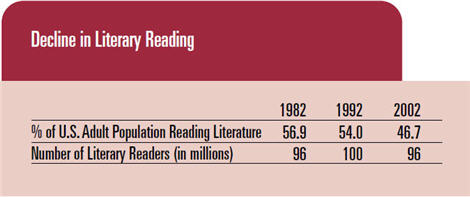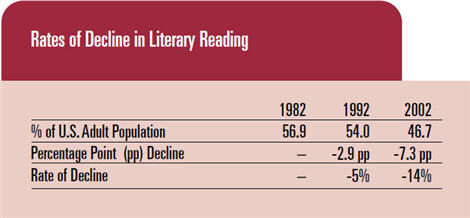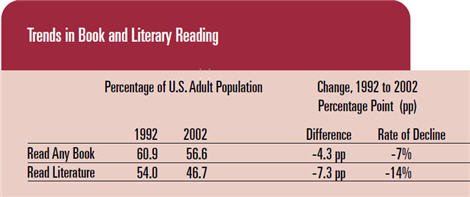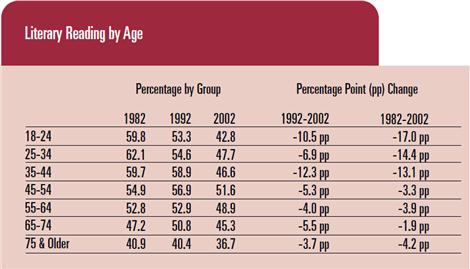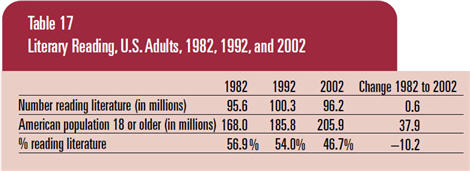Here's a nice article lifted from CNET reviews on self publishing your book by David Carnoy. He ended up with Booksurge so you may find that Booksurge is mentioned throughout the 25 items, but his experience is just as applicable to those who might want to self publish with other book publishing companies as well. I found it very insightful

1. Self-publishing is easy.
Here's how it works. You choose a size for your book, format your Word manuscript to fit that size, turn your Word doc into a PDF, create some cover art in Photoshop, turn that into a PDF, and upload it all to the self-publisher of your choice and get a book proof back within a couple of weeks (or sooner) if you succeeded in formatting everything correctly. You can then make changes and swap in new PDFs.
After you officially publish your book, you can make changes to your cover and interior text by submitting new PDFs, though your book will go offline ("out of stock") for a week or two. BookSurge charges $50 for uploading a new cover and $50 for a new interior.
Lulu offers very good, detailed instructions for the DIY crowd, doesn't require any upfront fees, and is very popular as a result. Ironically, I used Lulu's how-to content to put my book together for BookSurge, which has very poor instructions for DIYers. Interesting stat: Lulu claims to publish an average of 4,000 books a week. Oddly, the company didn't offer the size of the book I wanted to create (8 x 5.25 inches--the standard size for trade paperback novels; Lulu only offers 6 x 9, which is too big).
2. Quality has improved.
I can't speak for all self-publishing companies, but the quality of Booksurge's books seem quite solid. You can't do a fancy matte cover (yet), but the books look and feel like "real" books. The only giveaway that you're dealing with a self-published book would be if the cover were poorly designed--which, unfortunately, is too often the case.
3. Some of the more successful self-published books are about self-publishing.
I don't know what this says about the industry, but it's probably not a good thing. I didn't read any books because I was busy scouring the Internet, but there are a few that appear to have some useful information. However, take everything with a grain of salt because things change quickly in self-publishing and analysis of the industry tends to attract a lot of qualifying statements.
As Mark Levine notes in a "sample" review of his The Fine Print of Self-Publishing, "Will BookPros provide a service that is $20,000 better than anyone else in this book? If your book takes off, then yes. However, if your book isn't very successful, you may not think so." In another noteworthy book, Stacie Vander Pol takes a stab at ranking top performing POD self-publishing companies based on sales performance. I'd like to see this stuff on a free website rather than a book. But that's just me.
4. Good self-published books are few and far between.
Because the barrier to entry is so low, the majority of self-published books are pretty bad. If I had to put a number on it, I'd say less than 5 percent are decent and less than 1 percent are really good. A tiny fraction become monster success stories, but every once in a while, you'll hear about someone hitting it big.
5. The odds are against you.
The average self-published book sells about 100-150 copies--or 2/3 to 3/4 of your friends and family combined (and don't count on all your Facebook aquaintances buying). I don't have a source for this statistic, but I've seen this stated on several blogs and as a Publishers Weekly article titled "Turning Bad Books into Big Bucks" noted, while traditional publishers aim to publish hundreds of thousands of copies of a few books, self-publishing companies make money by publishing 100 copies of hundreds of thousands of books.
6. Creating a "professional" book is really hard.
Barrier to entry may be low, but creating a book that looks professional and is indistinguishable from a book published by a "real" publishing house is very difficult and requires a minimum investment of a few thousand dollars (I'm up at around $5,000 right now). You wonder why "real" books take 9 months to produce--and usually significantly longer. Well, I now know why. It's hard to get everything just right (if you're a novice at book formatting, Microsoft Word will become your worst enemy). And once you've finally received that final proof, you feel it could be slightly better.
7. Have a clear goal for your book.
This will help dictate what service you go with. For instance, if your objective is to create a book for posterity's sake (so your friends and family can read it for all eternity), you won't have to invest a lot of time or money to produce something that's quite acceptable. Lulu is probably your best bet. However, if yours is a commercial venture with big aspirations, things get pretty tricky.
8. Even if it's great, there's a good chance your book won't sell.
If your book is really mediocre, don't expect it to take off. But even if it's a masterpiece, there's a good chance it won't fly off the shelves. In other words, quality isn't a guarantee of success. You'll be lucky to make your investment back, let alone have a "hit" that brings in some real income. Don't quit your day job yet.
9. Niche books do best.
This seems to be the mantra of self-publishing. Nonfiction books with a well-defined topic and a nice hook to them can do well, especially if they have a target audience that you can focus on. Religious books are a perfect case in point. And fiction? Well, it's next to impossible. But then again, the majority of fiction books--even ones from "real" publishers--struggle in the marketplace. That's why traditional publishers stick with tried-and-true authors with loyal followings.
10. Buy your own ISBN--and create your own publishing house.
If you have market aspirations for your book, buy your own ISBN (International Standard Book Number) and create your own publishing company.
Even if you go with one of the subsidy presses for convenience sake, there's no reason to have Lulu, BookSurge, CreateSpace, iUniverse, Xlibris, Author House, Outskirts, or whomever listed as your publisher. For $99 (what a single ISBN costs) and a little added paperwork, you can go toe-to-toe with any small publisher. Lulu.com sells ISBNs. BookSurge does not. I bought mine at RJ Communications, which also provides author services. The complete list of sellers is here.
11. Create a unique title.
Your book should be easy to find in a search on Amazon. It should come up in the first couple of search results. Unfortunately, many authors make the mistake of using a title that has too many other products associated it with it--and it gets buried in search results. Not good. Basically, you want to get the maximum SEO (search engine optimization) for your title, so if and when somebody's actually looking to buy it they'll find the link for your book--not an older one with an identical title.
12. Turn-key solutions cost a lot of money.
You've written your book and God knows you'd like to just hand it off to someone, have a team of professionals whip it into shape, and get it out there. Well, there are a lot of companies that will offer to make just that happen--and do it in a fraction of the time a traditional publisher could. But those "packages" range anywhere from a few thousand dollars to upwards of $25,000 for the deluxe stuff at BookPros with some marketing/PR extras rolled in. (BookPros says it's selective and aims to take on books that it thinks will sell).
These folks can potentially put together a really nice book for you. But I've also heard a lot nightmare stories where people come away disappointed with the process and feel ripped off. Read this interesting interview with iUniverse CEO Kevin Weiss. Then read the comments in the comments section. You'll catch my drift.
13. Self-publishers don't care if your book is successful.
They say they care, but they really don't care. You have to make them care.
14. Buy as little as possible from your publishing company.
Self-publishing outfits are in the game to make money. And since they're probably not going to sell a lot of your books, they make money by selling you services with nice margins. That's OK. Some of the services are worth it--or at least may be worth it. In an experiment, I've invested in BookSurge's Buy X, Get Y program that pairs your book with an Amazon bestseller. While it's pricey--it's normally $1,000 a month, but during a special sale, I bought 3 months for the price of two--and may not help you sell all that many books, it does put your thumbnail image in front of a lot of people. (After I complete the program, I'll try to ascertain its effectiveness and report back).
Personally, I'd never work with BookSurge's in-house editors, copy editors, and in-house design people. That doesn't mean they're bad at what they do (I've seen some covers that are well done). But if you can, it's better to hire your own people and work directly with them. Ideally, you should be able to meet with an editor, copy editor, and graphic designer in person--and they all should have experience in book publishing.
By the way if you're interested in pairing your book with one of the big shots in Booksurge's Buy X, Get Y program, pairing your book with a bestseller isn't cheap.
15. If you're serious about your book, hire a book doctor and get it copy-edited.
OK, so I've just told to avoid "packages" from publishers and yet I'm now saying you need editing and copy-editing. So, where do you go? Well, before I sent my book out to agents, I hired a "book doctor" who was a former acquisition editor from a major New York publishing house (like most editors he worked at a few different houses). He happened to be the father of a friend from college, so I got a little discount, but it still wasn't cheap. However, after I'd made the changes he suggested, he made some calls to agents he knew and some were willing to take a look. His name is Jerry Gross and he's part of Independent Editors Group (IEG), a group of former acquisition editors who take on freelance editing projects for authors.
While I didn't use his copy editor (I used a friend of a friend who currently works at a big publishing house), he and other editors in his group can suggest people. To be clear, this isn't going to be a better deal than what you'd get from a package deal with a self-publisher, but these people are experienced and are going to be upfront and honest with you. They're not just pushing your book out to move it along the line on the conveyor belt, though they are trying to make a living. (Warning: They don't take on all writers).
By no means is IEG the only game in town. There are plenty of good book consultants out there, including Alan Rinzler, who has an excellent blog and straddles the line between being an executive editor at an imprint of John Wiley & Sons and providing services to private clients. I expect that as the publishing industry contracts further, you'll see more editors--and former editors--becoming guns for hire.
Note: I had the added advantage of my agent being a former editor at a publishing house. So, he was able to suggest changes that made the book better (alas, not good enough to entice a "real" publisher into buying it).
16. Negotiate everything.
BookSurge and other self-publishing companies are always offering special deals on their various services. There isn't whole lot of leeway, but it doesn't hurt to ask for deal sweeteners--like more free copies of your book (they often throw in free copies of your book). It also doesn't hurt to ask about deals that have technically expired. In sales, everything is negotiable. Remember, these people have quotas and bonuses at stake. (For their sake, I hope they do anyway).
17. Ask a lot of questions and don't be afraid to complain.
BookSurge charged me $300 to join the BookSurge club so to speak. Companies like Lulu and CreateSpace have complete DIY options and require no upfront setup fees. That's great, but when you're dealing with a superbasic package, you're most likely going to be doing customer support via e-mail or IM, which I don't love. I want to be able to call up and bitch (in a nice way, of course) directly to a live person on the phone and I'm happy to pay an extra $300 for that privilege (which is really the only thing you're getting for $300).
I will say this: The customer service at BookSurge has generally been great. You can't always get through to your sales rep, marketing rep, or customer service reps right away (yes, the company is very regimented), but they do get back to you pretty quickly and all my issues have been resolved within a day or two.
18. Self-publishing is a contact sport.
The biggest mistake people make when it comes to self-publishing is that they expect to just put out a book and have it magically sell. They might even hire a publicist and expect something to happen. It's just not so. You have to be a relentless self-promoter. Unfortunately, a lot people just don't have the stomach or time for it--which is part of the reason I anted up for BookSurge's Buy X, Get Y program, which is essentially a form of advertising.
19. Getting your book in bookstores sounds good, but that shouldn't be a real concern.
You may have always wanted to see your book in a bookstore but bookstores aren't keen on carrying self-published books and it's extremely difficult to get good placement in the store for your book so chances are no one will see the three copies the store has on hand anyway. Furthermore, your royalty drops to 10% on in-store sales. Some of the self-publishing outfits offer distribution through Ingram. BookSurge offers it through Baker & Taylor. BookSurge says: "Your trade paperback book will be available for order through Baker & Taylor on a non-returnable basis. For an additional yearly fee, your book can be made available through Baker & Taylor on a returnable basis with our Baker & Taylor Returnable Program. You'll receive a 10% royalty on all wholesale book orders purchased through Baker & Taylor."
Note: A while back I had a nonfiction book published by a traditional publisher, Faber & Faber. My local Barnes & Noble in New York had three copies of it. It felt good seeing it on a shelf--for about 10 minutes.
20. Self-published books don't get reviewed.
Yes, it's true. It's very hard to get your self-published book reviewed--and the mantra in the traditional publishing world is that reviews sell books. But eventually that will change. People didn't take bloggers seriously at first and now they do. And what's interesting is that reputable book reviewers such as Kirkus are offering special reviews services geared toward self-published authors. The author pays a fee to have the book reviewed (around $400-$550, depending on the speed) and a freelancer writes an objective critique (yes, they do negative reviews) in the same format as a standard Kirkus review--except the review must be cited as a Kirkus Discoveries review. I expect more companies to go this route to expand revenue streams.
21. Design your book cover to look good small.
(Credit: Amazon)
Traditional book publishers design--or at least they used to design--a book cover to make a book stand out in a bookstore and evoke whatever sentiment it was supposed to evoke. Well, with Amazon becoming a dominant bookseller, your book has to stand out as a thumbnail image online because that's how most people are going to come across it. If you're primarily selling through Amazon, think small and work your way up.
22. If you're selling online, make the most out of your Amazon page.
I'm a little bit surprised by how neglectful some self-published authors are when it comes to their Amazon product pages. I've talked to self-published authors who spend a few thousand dollars on a publicist and their Amazon product page looks woeful--and they've barely even looked at it. I ask, "Where are people going to buy your book?" They don't seem to realize how important Amazon is. True, some people market through a Web site or buy Google keywords to drive traffic there. But you need to have your Amazon page look as good as possible and take advantage of the "tools" Amazon has to help you surface your book ("Tags," Listmania, reader reviews, etc.). It may not have a major impact, but it's better than doing nothing.
One tip: Make sure your book is put into five browsing categories (it's only allowed 5). It helps to categorize your book to readers and also will make your book look better if it's a bestseller in those categories. No one at BookSurge suggested this to me; I had to figure it out on my own. (Again, they don't care, you have to make them care).
The manifestation of categorizing your book.
(Credit: Amazon)
23. Pricing is a serious challenge.
The biggest problem with going the POD route is that it costs more to produce one-offs of your book than it does to do produce thousands. I can buy my book--it's a paperback--from BookSurge for $5.70. It's about 370 pages. Now, if I went ahead and had the thing printed up directly through an off-set printer--and ordered a few thousand of them--I could probably cut the cost of the book in half, and maybe even a little more. But I'd have to pay the upfront fee to buy the books and then I'd have to figure out a way to sell them (this is how vanity presses used to work--you had to agree to buy a few thousand books).
Amazon sells my book for $15.99 (It stared at $17.99 but I've managed to get BookSurge to whittle the price down by $2). BookSurge royalty rates seem to be standardized: authors get 35% of the book's list price. You can also sweeten the pot by becoming an Amazon affiliate: if customers buy the book through the Amazon affiliate link (say, on an author-produced website that advertises the book), that's an additional 7% in the author's pocket.
Those are actually quite good royalty rates (interesting article here) in the world of subsidy self-publishing. But the fact is, to compete against top-selling titles from traditional publishers my book should be a little cheaper (I barely beat the hardcover prices of bestsellers). Some of the other subsidy self-publishers seem to have a little more flexibility with price setting on Amazon, but BookSurge appears to have a better overall rate of return compared to the likes of Lulu, iUniverse, and Xlibris. In other words, if I was using Lulu and I set my selling price at $15.99 on Amazon, I'd make less money. (Lulu.com touts its own online store, which is well designed and has a big audience, but--compared to the Amazon juggernaut--I have my doubts you can sell a lot of books there).
As I said, I've generally had a good experience with BookSurge and have been pleased with the service. However, the one thing that I truly resent is how my book is priced on Amazon. There's no discount on it! Every book from every "real" publisher has a slash through the list price and then there's the Amazon price. On mine, the list price is the price.
That's not cool, Mr. Bezos. I mean, if BookSurge needs to set a price floor to hit certain margins, set the list price higher, put a slash through it, and put the street price at a buck or two less and give the author the royalty on the street price. That way, the book looks like every other book and the buyer thinks he or she is getting some sort of discount. That's important. As it is, I guess I'm looking at sort of an Apple pricing model, where the list price is the street price. I should note that there is a chance my book might get discounted--but it's dependent on an Amazon algorithm that kicks in when you hit some sort of milestone that remains shrouded in mystery. To be fair this is not a BookSurge problem exactly, it's more of an Amazon/BookSurge synergy problem and a database issue.
24. Electronic books have potential, but they're still in their infancy.
Once you have your book finalized in a Word or PDF file, it's relatively easy to convert it into one of the many ebook formats--or just offer it as a download as a PDF. There are several epublishers geared to "indie" authors, including Smashwords (good list of others here) and many ebook-oriented blogs. I like the concept of HarperCollins' Authonomy, which is designed to discover new talent--but it's more geared toward trying to get a traditional publishing contract.
In terms of ebook readers, Amazon's Kindle and Sony's Reader line have the biggest audiences (BookSurge charges $299 to turn your book into a Kindle ebook--that's too much, considering you can find other parties to convert it correctly, formatting tweaks and all, for half that, and probably less). But a lot of people are looking toward the iPhone and iPod Touch as a potentially interesting market for ebooks because there are so many of them out there (see CNET TV's Molly Wood's related video here). For self-published authors, I see all these electronic avenues as ways to reach a larger audience quickly, but I don't see anybody getting a ton of downloads unless you're willing to sell your ebook very cheaply or give it away. There are exceptions, of course, but self-published ebooks present more of a supplemental marketing opportunity than a way to make big bucks.
25. Self-publishing is a fluid business.
Self-publishing is a rapidly evolving industry with lots of competitors that are constantly throwing out new information. Publishers are continually upgrading their facilities, infrastructure, and pricing, and what I--or other pundits say today--could be wrong just a few months from now. Last year, BookSurge was only offering 25 percent royalties on books. This year, it's 35 percent. What does next year hold in store?













